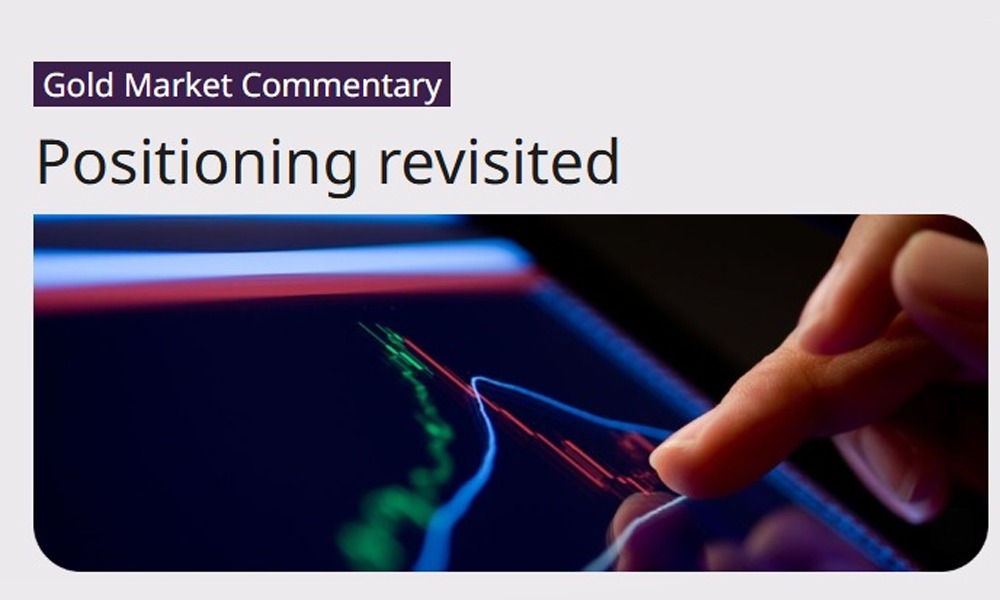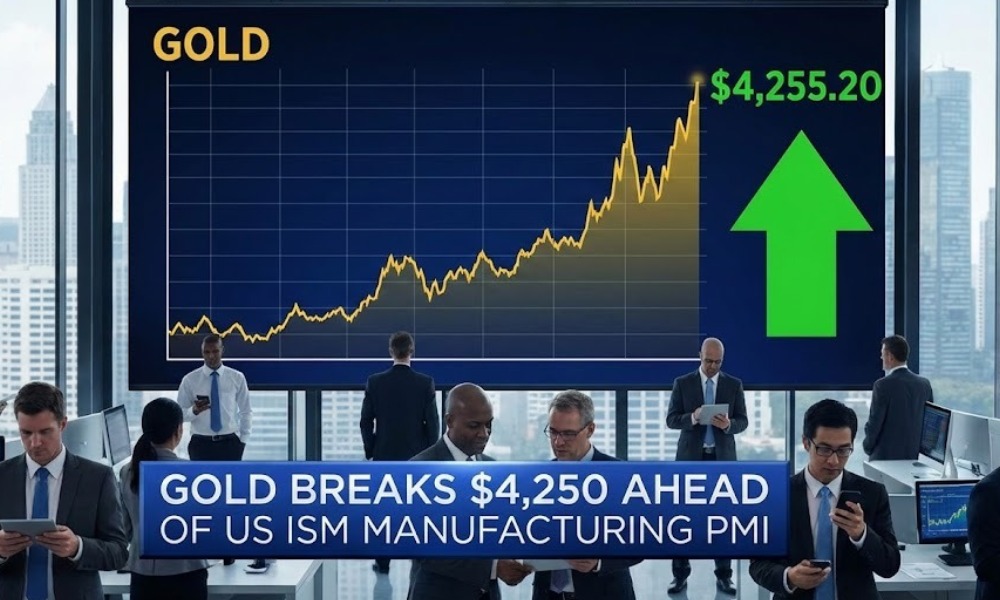International News
WGC Gold Market Commentary: Positioning revisited
Gold in July saw modest gains on tariff-driven inflation expectations, though a stronger US dollar capped upside. Looking ahead, fundamentals point to rising net longs bridging the gap with COMEX prices, rather than a decline in prices.

July review
Gold edged up in July, aided by higher tariff-led inflation expectations but a stronger US dollar proved a drag
Looking forward
A gap between prices and COMEX positioning is likely to be filled by rising net longs, not falling prices, as we view fundamentals to be supportive of the former
Gold drags itself higher
Gold prices edged up 0.3% to finish July at US$3,299/oz. A stronger US dollar contributed to positive returns in all major currencies. Year-to-date, gold remains up 26% (Table 1).
Our Gold Return Attribution Model (GRAM) suggests a positive contribution from a rise in inflation expectations and tariff tensions via our geopolitical risk metric (both Risk and Uncertainty factors). Momentum factors also contributed positively, while a stronger US dollar proved a heavy drag on returns in July (Chart 1).
Gold ETF inflows of US$3.2bn (23t) were split almost equally between North America (US$1.4bn, 12t) and Europe (US$1.8bn, 11t), while Asia slightly increased (US$0.1bn, 0.8t) and other gold ETFs (-US$0.1bn, -1t) experienced mild outflows. COMEX managed money net longs continued to build positions following the April trough.
Positioning revisited
The meaningful gap between COMEX positioning and the gold price, caused largely by tariff fears, is likely to be closed by positioning rising not prices falling, in our view
This is supported by key fundamentals, including: a weaker US dollar and real rate trajectories, alongside elevated market and geopolitical risks
Despite a disconnect between real rates and the gold price, COMEX investors have not disconnected and the relationship is likely to strengthen if yields drop.
Jaws wide open
With recent attention focused firmly on central banks, gold ETFs and Chinese investors, we thought it worthwhile to revisit what the so-called ‘fast money’ positioning on COMEX is telling us. One would think that given where gold prices are, investors would be loaded to the gills. We know this not to be the case as a share of overall portfolios, but it doesn’t appear to be the case in absolute terms either managed money shows net longs, typically representing hedge funds and larger financial institutions (dark blue line). These positions are above average, but it’s still a bit surprising they’re not higher—especially considering where gold prices are right now.
It can probably be pinned on an unwind of the tariff-fear trades in early 2025, and perhaps a bit of profit-taking. The stark sell-off in futures began well before the intraday spot priced peaked at the end of April. Looked at through a z-score lens1—so relative to recent trading ranges—this was a sharp capitulation (light blue dotted line).
Gas left in the tank
COMEX futures investors have recovered some of this lost ground, but this reset leaves us with the view that they have capacity to rebuild positions – a sentiment echoed for ETF investors in our Mid-Year Outlook.
One proviso is that fundamentals support that buying, and we think they do: A structurally weaker US dollar is one key factor and is backed by a strong case and consensus view,2 notwithstanding a possible near-term short squeeze given how crowded the trade is3
Added to that, risk perception remains elevated. Despite the current lull, the markets could be jolted by implied bond volatility or a resurgence of policy and geopolitical tensions (Chart 3)
Lower policy rates should also be a catalyst. But does that also mean lower bond yields, particularly real ones – the bit that’s empirically more important for gold? and if they haven’t mattered on the way up, will they really matter on the way down?
We care a lot
This decoupling of gold prices from inflation-linked bond yields (TIPs) is well documented by now with central banks, emerging market investors and a sprinkling of term premium the likely culprits.
But US futures investors have not decoupled from real yields, they still care. Yes, their sensitivity might be a little lower, likely due to term premia, but it’s still highly significant
Rates are probably already restrictive, so if the front end eases, the long end might follow suit. The weak labour market data in early August is edging us towards this outcome. This could also happen mechanically if lower policy rates stoke longer-term inflation fears, something that swap rates are currently hinting at (Chart 6).
International News
Gold prices climbed above $4,250 ahead US ISM Manufacturing PMI release

US spot Gold prices climbed above $4,250 early Monday, touching a six-week high as investors turned cautious ahead of the upcoming US ISM Manufacturing PMI release. The yellow metal is poised for further upside momentum if it secures a sustained daily close above the crucial $4,250 resistance level.
The US Dollar opened December on a softer note, pressured by rising expectations that the Federal Reserve may announce a rate cut next week. Growing market confidence in easing monetary conditions has boosted the appeal of non-yielding assets such as gold.
Analysts note that a decisive break and close above $4,250 could reinforce bullish sentiment and pave the way for an extended rally in the days ahead. As global markets await fresh cues from the US economic calendar, gold continues to benefit from a favorable macroeconomic backdrop and robust safe-haven demand.
-

 BrandBuzz3 hours ago
BrandBuzz3 hours agoMCA raises “small company” thresholds – up to ₹10 cr capital & ₹100 cr turnover from 1st December 2025, major relief for jewellery trade
-

 JB Insights3 hours ago
JB Insights3 hours agoWomen Leaders Driving the Luxury Renaissance
-

 National News7 hours ago
National News7 hours agoSHINESHILPI Announces the Launch of The Shine House, India’s Biggest B2B Jewellery Hub
-

 National News5 hours ago
National News5 hours agoTalla Jewellers Successfully Hosts Free Health Checkup Camp with Fortis Escorts Amritsar and Live For Others Foundation







